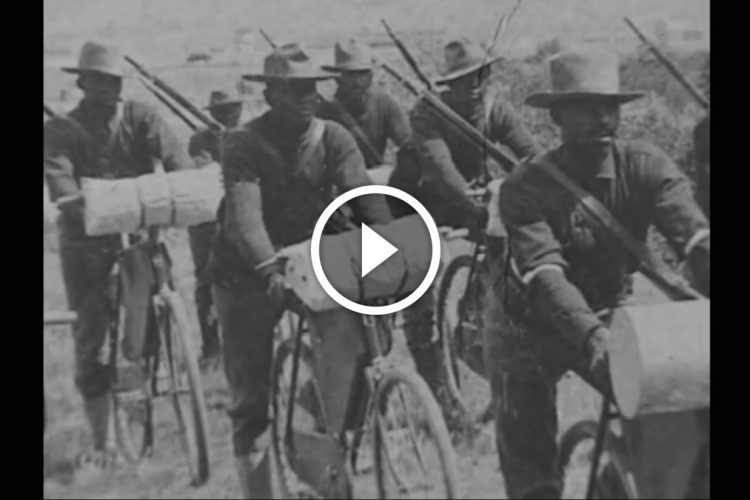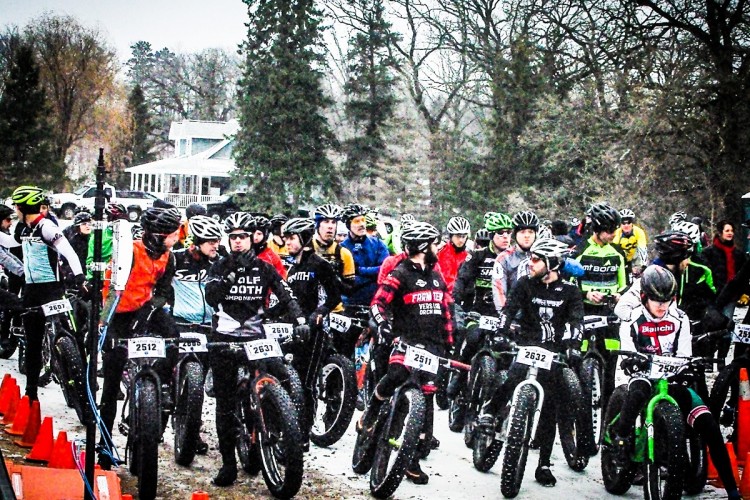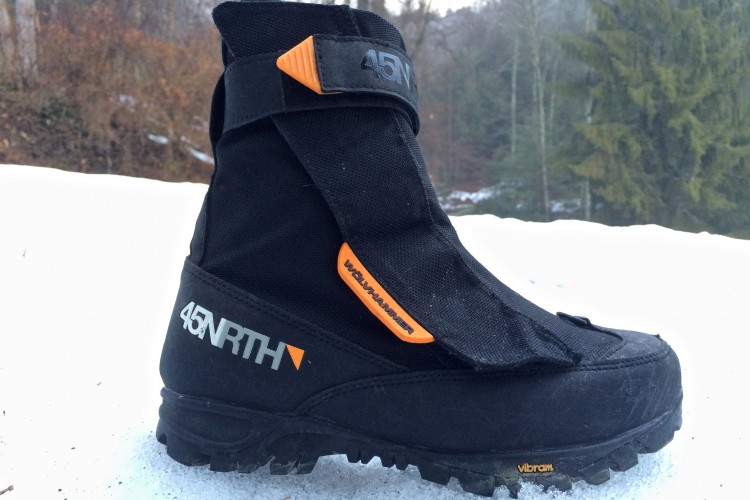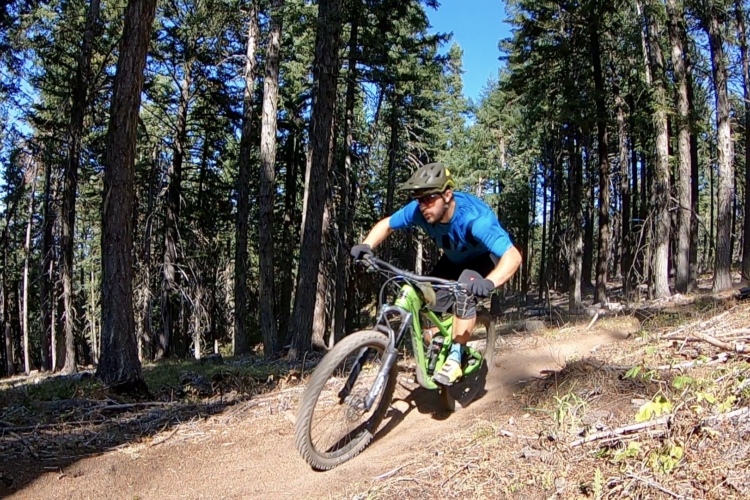After retelling Bill’s story of his adventures in Namibia, I had a chance to sit down with him and talk about how the trip came about and pick his brain a bit about what it was like to spend 6 days riding a prototype fat bike in the desert. If you have any questions for Bill, ask away in the comments!

Singletracks.com: How did the trip plan come about?
Bill Fleming: Well, there is no diplomatic way to say this: I came up with the idea in the bathroom. You can come up with some crazy ideas with nothing more than a bathroom and a smartphone. Anyway, I was wondering if there were other places in the world as wild and wide-open like Alaska, so I Googled it. Sure enough, there is a list on Wikipedia of countries by population density. Almost at the bottom, below Angola, was Namibia. Now, I didn’t actually know anything about Namibia, only that it was a country in Africa. I pulled up a map, and boom!, a giant stretch of desert coast jumped out at me. I reckoned it was around 300-ish miles long, totally surrounded by the immense Namib Desert and, of course, the first thing I thought was, “Hmm, I wonder if I could ride my fat bike along the coast.” I joke that the whole process, from idea to plan, took about eight minutes.
ST: What steps did you take to plan?
BF: The first thing I did was learn a bit about the country. Was it safe? That kind of stuff. I like history, so I basically ready everything I could about Namibia. I got the best information by sending emails to the bike shops in Windhoek, the capital of Namibia. I found out that the route I wanted to do wasn’t possible and, anyway, it was against the prevailing winds. The responses I got were pretty negative. All of the bike shops, with the exception of one, advised me against doing the trip. The one shop that did respond was a huge help. Mannie Heymans from Mannie’s Bike Mecca pretty much made the trip happen for me. He has a buddy who specializes in planning vacations for tourists, and they are both huge cyclists. Since this was sort of like a vacation, his friend, Leander, was pretty keen to help us out. All of the logistics were really set up by Leander.
ST: What was the most useful planning tool?
BF: Google. That’s how I found the bike shop, where I looked at maps, researched the climate, all the history, that kind of stuff.
ST: How did you convince others to join in on the adventure?
BF: The original idea was to do this trip with my wife unsupported. When I realized that really wasn’t feasible, I had to lean on Leander and Mannie to help out with the logistics. As they learned more about this idea I had, they started getting excited about it and wanted in on the action. I figured, the more the merrier. Then they told other people, and so on. We ended up with nine riders. I didn’t have to convince anybody to join. Well, that’s not entirely true. My wife… but that’s a different story!
ST: Though none of the trip looked easy, what would you say was the biggest hurdle during the trip?
BF: Because we didn’t actually know if the trip was possible or not, we didn’t know how far we could go in a day. Because we went a little slower than anticipated, the days ended up being pretty long. Towards the end, I was pretty fatigued. Those were some long days.
ST: When choosing your gear, how did you decide what stayed at home and what came with?
BF: I have a bit of experience with long distance endurance racing in the winter, and I thought this would be similar in some respects. I usually go pretty light, but because the trip was supported, I didn’t actually need to carry much on my bike: water, food for the day, sunscreen. Desert riding is more about hydration and sunscreen.
ST: How did you choose the bike for the trip and how was it set up?
BF: I was riding a prototype 9:ZERO:7 with sliding dropouts and a Gates belt drive system. We worked with Rohloff in Germany on their new (at that time) 170mm-spaced Speedhub, and the frame was pretty much built around that hub, so rear frame spacing was set at 170mm. This setup really appealed to me for a bunch of different reasons. You’re in the desert, right? It seemed like the perfect environment for an internally geared hub and a belt. I was worried a chain-driven system would keel over and die in the desert or on the coast.
The system worked extremely well, especially when we got to the coast and rode through the wet sand. We actually got rained on one morning, and that’s when the IGH and belt really stood out. All in all, riding the sand felt familiar to me. The basic rules about fat bike tire pressure were the same.
One thing I would probably do is run wider rims and tires. I think 100mm rims and a 5” tire would be perfect for all-around desert riding. The leeward slopes of the dunes were really soft and I could have used the extra floatation. Also, the transition area from windward to leeward was soft and unpredictable. Most of the time, especially before the dunes got huge, the Rolling Daryl rims and Husker Du tires worked fine, but I’d go bigger if I did it again.

ST: What would you say were some lessons that you learned after the trip? Is there anything that you would do differently?
BF: I suffered on the first day. I’ve spent most of my life in Alaska, and the heat really got to me; I really wasn’t hydrated very well. I kept thinking, “you’re in the desert, fool! You should have thought about these things.” Of course, it was too late by that time, and I had to crawl out of a deep hole with some help from someone on the trip. Looking back, I would have given the desert a little more respect. Once I spent the evening hydrating and eating, I was good to go for the remainder of the trip, but I didn’t do myself any favors in the days leading up to the trip.
ST: What’s next?
BF: I’m looking at an island at the end of the Alaska peninsula, Unimak Island. It’s the largest island in the Aleutian Islands and I think you could circumnavigate it on a fat bike. The northern part of the island looks like it could be fun. The southern part? Not sure…

Photo courtesy of Andy Chase.
ST: Do you have any parting wisdom for those looking to embark on their own adventures?
BF: Adventure is only a bathroom break away! Seriously, just let your mind wander, and ideas will come. Remember, though: the idea is the easy part. Executing the plan is something different.
Your turn: If you have any questions for Bill, ask away in the comments section below!























0 Comments